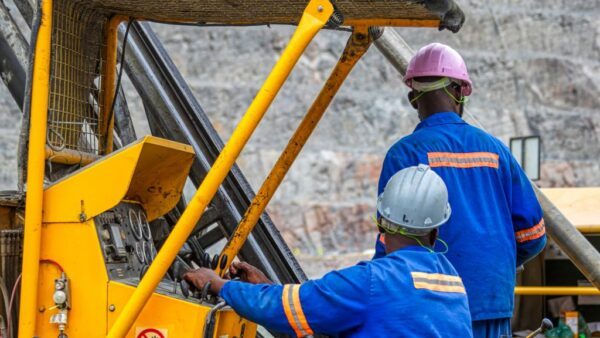A COUPLE of weeks back, Zimbabwe Chamber of Mines published its state of the mining industry survey report looking at issues faced by the industry and prospects for 2022.
To ensure objectivity, the Chamber states that its involvement was restricted to sponsoring and facilitating access to information to its members who form a greater part of the respondents in the survey.
The report looks at key highlights, mining business confidence, local content and corporate social investments in the mining industry, expectations of the artisanal and small-scale mining sector (ASSM), COVID-19 and mining industry outlook for 2022 prospects.
Mining sector executives are reportedly positive on the prospects of the sector to be mainly driven by improving international commodity prices and a resultant increase in capacity utilisation in the sector as output is expected to grow.
The downside threats include the continuing high risk perception of the country which is likely to limit major investments in the sector, continuing infrastructure and energy deficits, problems with access to foreign currency and increasing costs of capital and operations.
In my opinion, I don’t see how anyone can be positive about a growth in output without these key challenges being fully addressed.
An increase in mining output is key in order for us to increase our foreign currency earnings and employment in the sector.
We have definitely not been well organised and aggressive in unlocking our mineral resources and most of it has to do with the political economy of the sector.
Chrome, coal and diamond subsectors are expected to grow significantly in 2022 while platinum will continue to dominate the sector.
Major expansions are expected in the gold and platinum subsectors with expectations that gold output will reach 35 tonnes.
Capacity utilisation is expected to increase to 83% in 2022, a miniscule increase from 82% in 2021 mainly driven by gold and ferrochrome.
For the mining sector, the fiscal regime continues to play a significant role and can either stifle or enable growth.
Key fiscal issues identified which continue to undermine viability prospects include high royalty and beneficiation taxes, high environmental management levies and misaligned rural district council charges.
On the issue of access to foreign exchange, miners are not happy with the 60% retention which is viewed as inadequate to meet increasing operational costs.
Added to this, the practice of having to pay for local expenditure in foreign currency reduces funds available for importation of essential inputs and it makes sense to allow miners to pay taxes, royalties, electricity and statutory obligations in local currency and premising of taxes, fees and charges at the obtaining auction market rate.
A key input to mining operations is energy and indications are that on average, miners are facing six hours of power outage per day and this has serious repercussions on operations and output. Unfortunately, the situation is expected to worsen in 2022 and this will limit output growth prospects.
In my opinion, such matters need urgent attention at the highest level. Accepting payment for electricity bills in local currency, for example, will have a significant positive impact on the sector and rehabilitation of dilapidating power infrastructure is critical.
The issue of capital inflows into the sector remains a challenge due to subdued foreign direct investment into the economy as a whole.
Most miners indicated that they are facing difficulties in raising external capital to fund their operations, with some reporting that they had put on hold some of their projects due to capital shortage. Only improved political and macro-economic stability can address these issues.
On the issue of mining policy environment, survey findings show that most respondent executives, 74%, are expecting the mining policy environment to be suboptimal, citing delays in finalising outstanding policy matters including a mineral development policy and mining cadastre.
This falls under mining sector organisation, a matter which I have written on before. An enforceable, transparent and comprehensive regulatory framework for natural resource sectors provides a stable and predictable policy environment which increases long-term investment in the sector.
The quality and consistency of the legal, regulatory and fiscal frameworks in the sector will, therefore, always have a major influence on the growth of the sector.
On artisanal and small-scale miners (ASM), the key issues raised are the need to formalise the sector and develop appropriate legislative tools especially on allocation of mining rights. The ASM sector remains disorganised and highly risky and yet it can significantly contribute to high minerals output.
Overall, although the report tries to create a balanced perspective and to remain positive, there is still a lot to be done to get our mining sector operating at full capacity. What is clearly lacking is substantive progress on stated intentions. Everyone seems to understand what needs to be done and yet progress is very slow.
As a result, Zimbabwe’s mining sector potential remains untapped due to lack of investment in a sector that could do wonders for the economy.
I will conclude by repeating an important quote from the book: “Rents to Riches” – The Political Economy of Natural Resource–Led Development.
“Countries that are more politically inclusive are likely to enjoy better natural resource management and developmental outcomes. Countries where a greater proportion of society has a voice in policy making and where decisions are made on the basis of public goods provision to the many, rather than private spoils to the few, are more likely to benefit from welfare-enhancing policies that share extractive sector developmental riches across social, political, and economic groups in a sustainable fashion.”
That is surely the route we must take if we are to see Zimbabweans benefiting from their mineral resource endowments.
- Vince Musewe is an independent economist, you may contact him on [email protected]
.png)




